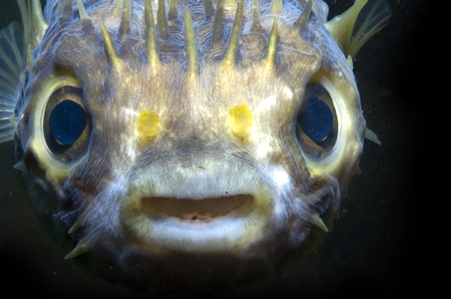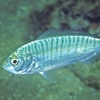General Description
Body robust, somewhat oval, brown to greyish on top, white below, covered in long white to yellow spines and 3-4 dark vertical bands or blotches on sides. The spines usually lay flat against the body. When threatened, globefish rapidly inflate themselves with water or air, causing the spines to stand erect. To 30 cm, although most grow to about 15 cm.
Biology
When threatened, Globefish greatly inflate their bodies causing their spines to stand erect from the body and becoming spiny "globes".
Habitat
Common and widespread in a range of habitats, preferring sheltered reefs, and often seen in weedy areas, around jetties and pier piles, in depths of 0-85 m.
Reefs
Seagrass meadows
Distribution guide
Southern Australia.
Species Group
Depth
Shore (0-1 m)
Shallow (1-30 m)
Deep ( > 30 m)
Water Column
Max Size
30 cm
Harmful
Spines on body can inflict injury.
Commercial Species
No
Global Dispersal
Native to Australia
Conservation Status
- DSE Advisory List : Not listed
- EPBC Act 1999 : Not listed
- IUCN Red List : Not listed











